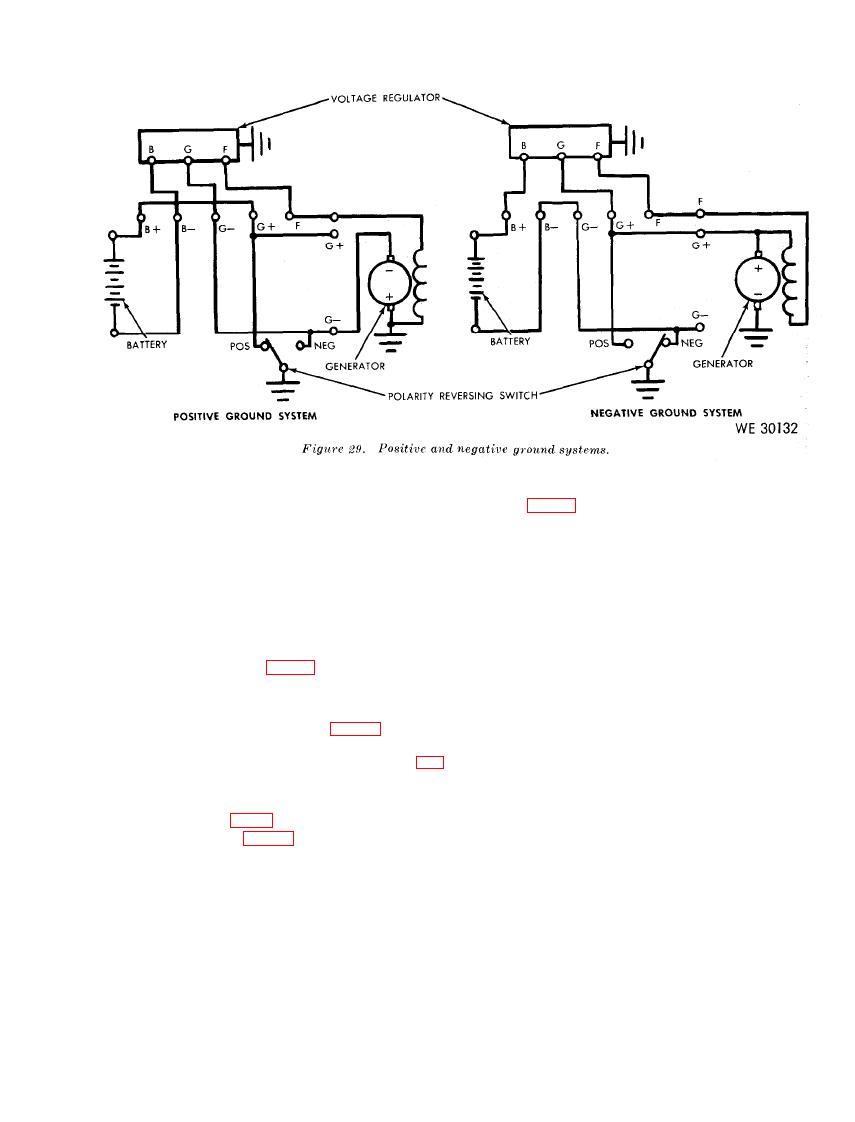
erator regulator is the "Fixed Resistance
t h r o u g h the fixed resistance selector switch
Method." T h e fixed resistance is substituted
(36-A, fig. 16), these respective values will then
f o r the external charging circuit and is con-
b e connected between the "BAT" terminal of
nected in series with the circuit to compensate
t h e generator regulator and the negative bus
for the fluctuation in the resistance value of the
circuit or ground in the test stand.
c i r c u i t (lights turned on, battery not fully
c. Normally, the 0.75 ohm is used with 6-volt
charged, etc.). Resistors of 0.25 ohm, 0.75 ohm,
units, the 1.5 ohms with 12-volt units, and the
1.5 ohms, 2.25 ohms, and 7.0 ohms are provided
7 . 0 ohms with 24-volt units, however, with
within the test stand and the selection of these
6 - v o l t units of less than 15 amperes capacity
different value resistors is made through a
some specifications will call for the use of 1.5
selector switch (36-A, fig. 16).
ohm fixed resistance to avoid interference with
b. To connect this resistance in the circuit
the current regulator unit of the generator regu-
the lead number 38425 is disconnected from the
l a t o r , and with 12-volt units of less than 15
battery terminal (marked "A") (fig. 31) at the
amperes capacity the use of 2.25 ohms resist-
generator regulator and this lead is connected
ance for the same reason. The 0.25 ohm resist-
to the regulator check binding post (36-B, fig.
ance is used for certain 6 and 12-volt systems,
16) on the test stand main control panel. Using
but is connected to the plus or positive bus cir-
a n o t h e r test lead number 38425, connect the
cuit in the test stand. Refer to data in pertinent
binding post (36-B, fig. 16) to the battery ter-
p u b l i c a t i o n and/or manufacturer's literature
m i n a l marked "A" (fig. 31) on the generator
c o v e r i n g the unit under test for information
r e g u l a t o r . By connecting the resistance value
r e l a t i v e to these circumstances.
of 0.75 ohm, 1.5 ohms, 2.25 ohms, or 7.0 ohms
Section IV.
OPERATION UNDER UNUSUAL CONDITIONS
sting under unusual conditions a r e contained
103. General
h e r e i n . In addition to the normal preventive-
I n addition to the normal operating proce-
m a i n t e n a n c e services (pars. 90 through 102),
dures described in Section III, Operation Under
special care in cleaning and lubrication must be
Usual Conditions, special instructions for oper-

